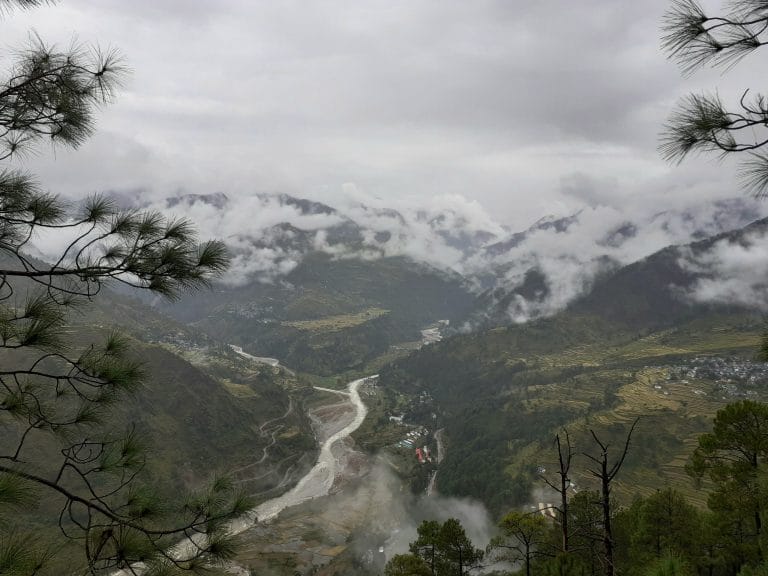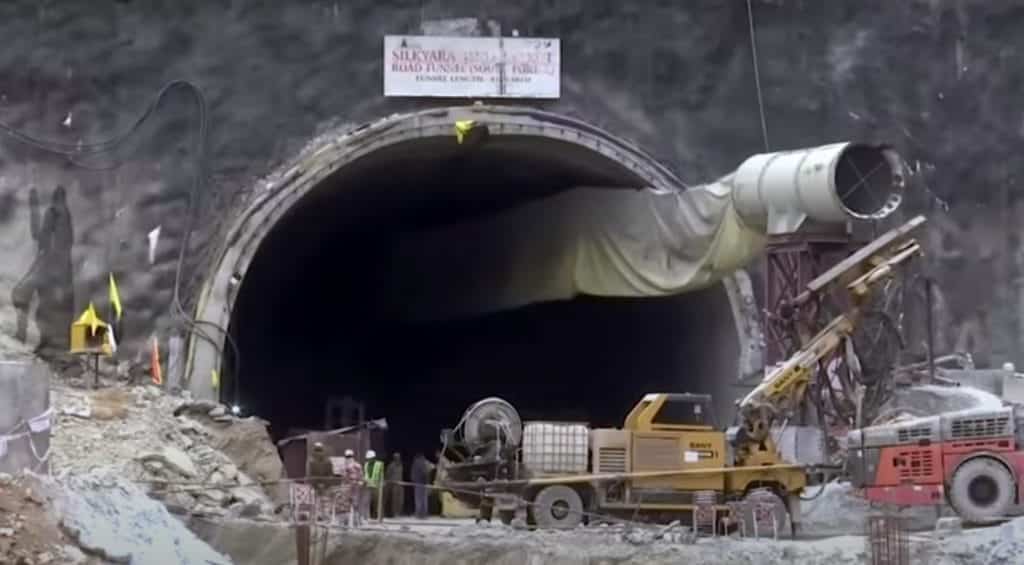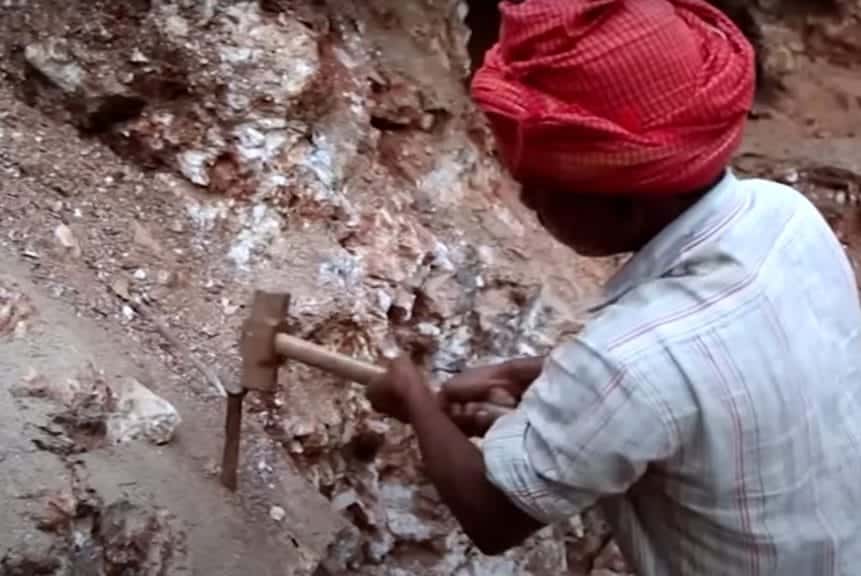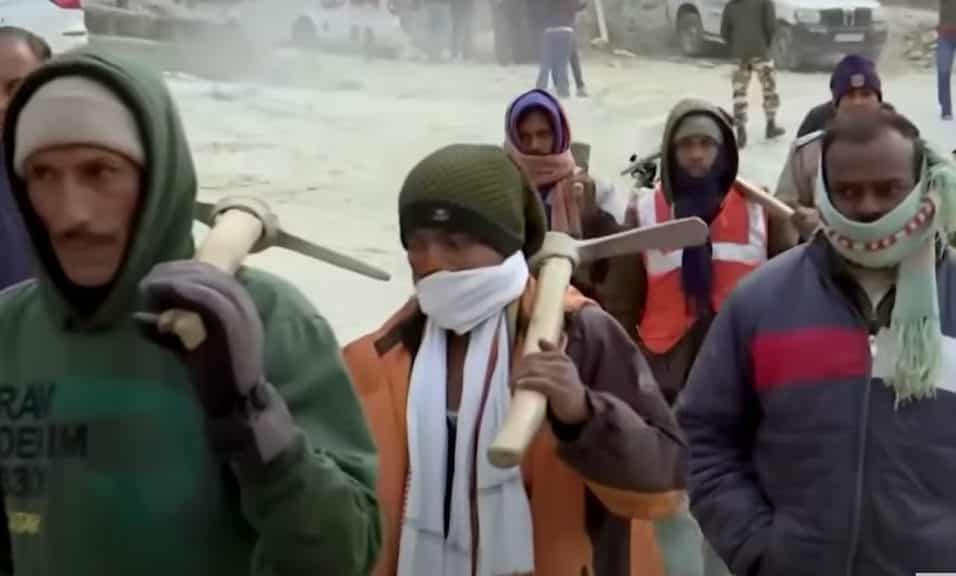41 Indian construction workers have been saved from a collapsed tunnel in the Himalayas after a 17-day rescue effort. The men, trapped by a landslide, were carried out on stretchers on Tuesday night.
The solution?
An escape pipe, hand-dug by outlawed rat-hole miners.
Why were the laborers trapped in the first place?
A landslide of rock and debris, caused by a sudden collapse, blocked the construction workers’ exits from the Silkyara-to-Barkot road tunnel on November 12th.
The Silkyara-to-Barkot tunnel is part of an 890km project to connect the Char Dham holy sites, popular Hindu pilgrimage destinations, via underground roads through the mountains. The works are currently overseen by the National Highway and Infrastructure Development Corporation.
Though the landslide’s exact cause has not yet been verified, the Himalayas are notoriously volatile. This year alone has seen severe floods and rockfalls in the Uttarakhand region.
Planning permission for an escape passage, running alongside the Silkyara-to-Barkot tunnel, was granted by the Cabinet Committee on Economic Affairs in early 2018. The passage’s estimated production time was 4 years. For whatever reason, it was not completed prior to the rescue.

What were conditions like in the collapsed tunnel?
According to the Ministry of Road Transport & Highways, the workers were confined to an 8.5m high and 2km wide area. Protected by finished concrete infrastructure, they used a pre-established lifeline to receive air, water, food and electricity. Fresh fruits, cooked meals, and dried supplies were regularly sent into the tunnel, as were medicine and other health-related items.
The State Disaster Response Force’s communication system facilitated almost constant discourse between the trapped men and officials. On Monday, Principal Secretary to the Prime Minister PK Mishra used the system to speak to the construction workers two weeks into the ordeal.
How were the men saved?
Five state and national organizations were called in to rescue the workers. Sporadic, multi-directional attempts were made to drill exit passages into the mountain-scape, from various locations. A 1.2km road was built to carry heavy machinery around the site.
Fifteen days in, however, steel rebars blocked the auger machine’s drilling blades.
A Delhi-based team of rat-hole miners was summoned to dig their way to the trapped laborers manually. Led by Wakeel Hassan, they used hand-held drills to break through the last 12m of debris. Their 90cm-diameter tunnel provided a route for rescue workers to evacuate the men after a traumatic 400 hours stuck in the Himalayas.

What is rat-hole mining, and why is it banned?
Rat-hole mining is an unscientific method of gathering coal. Most common in the Three Hills region of Meghalaya, the practice gained momentum during India’s 1970s coal boom. It requires digging 3-4m deep tunnels, so narrow that humans struggle to squeeze in and out – hence the rat analogy.
The instinctive nature of rat-hole mining comes with many risks: asphyxiation, poisonous gases, sudden floods and structural collapses, to name a few. In 2012, 15 miners drowned in a swamped rat-hole mine in South Garo.
Rat-hole mining is also environmentally destructive. According to the Central Pollution Control Board, in 2008, rivers in Jaintia Hills could not sustain life. Acidic rat-hole mining discharge was deemed the cause of the issue.
India’s National Green Tribunal banned rat-hole mining in early 2014.
Since then, covert rat-hole mining operations have continued. In 2018, a 70-man National Disaster Response Force fleet was enlisted to rescue 15 men from a flooded mine. Their efforts were to no avail. Last year, five men were arrested for covering up three deaths at a rat-hole in Ledo. Commenting on the incident, police promised a crackdown on illegal mining organizations.

How will the rescue impact future rat-hole mining?
Lifted out one by one, the 41 laborers emerged to a celebratory atmosphere on Tuesday night. Video recordings show them draped in flower garlands, smiling as they enter ambulances for health checks.
Hassan and his team of rat-hole miners have been cast as the humble heroes of the whole affair. Amidst news of OpenAI and industrial robots, manual labor’s surprising victory over heavy-duty machinery is refreshing for many. X users are hailing a triumph for jugaad – the Hindu, Punjabi and Urdu word for makeshift, in-the-moment innovation.
It is unclear whether the rescue will soften the police’s proposed crackdown on rat-hole miners. Prime Minister Narendra Modi is currently attending the COP-28 summit in Dubai. Yet, with the International Energy Agency forecasting an increase in coal demand, 2024 may see an (albeit illicit) resurgence in rat-hole mining.















Amélie
December 4, 2023 at 3:06 pm
An interesting and informative read!